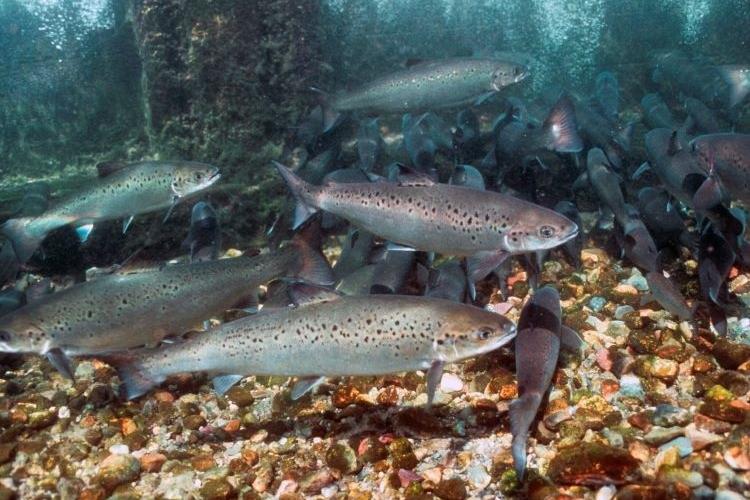Growing salmon fish, also known as salmon farming or aquaculture, involves creating a controlled environment that mimics the conditions of their natural habitat to support their growth and development. Here are the steps to grow salmon fish:
- Select a Suitable Location: Choose a location for your salmon farm that provides access to clean, cold, and oxygen-rich water. Coastal areas or regions near freshwater sources with appropriate water quality and temperature are typically preferred.
- Construct Salmon Pens or Tanks: Depending on the scale of your operation and the species of salmon you intend to farm, you can use sea pens (for saltwater species) or freshwater tanks. Ensure that the facilities are designed to withstand environmental conditions, including wave action and strong currents if you’re farming in the ocean. Equip your facilities with proper water circulation, filtration systems, and netting to contain the fish.
- Water Quality Management: Salmon are sensitive to water quality. Maintain cold water temperatures within the appropriate range for the species you are farming (e.g., Atlantic salmon require temperatures between 8-14°C or 46-57°F). Regularly monitor parameters such as dissolved oxygen, pH, salinity, and ammonia levels. Adequate water circulation and aeration are crucial to ensure a healthy environment.
- Select Salmon Species: Choose the salmon species that suits your farming conditions and market demand. Commonly farmed salmon species include Atlantic salmon, coho salmon, and rainbow trout. Each species has specific requirements and growth characteristics.
- Stocking Salmon: Purchase healthy salmon smolts (juvenile fish) from a reputable source. Stock them in the pens or tanks at recommended densities, taking into account their growth potential and available space.
- Feeding Salmon: Provide a balanced diet for salmon. Commercial salmon feeds are available in various forms, such as pellets. Feed the salmon according to their age and size. Monitor their feeding behavior and adjust the feeding schedule and quantities accordingly. Proper nutrition is essential for their growth and health.
- Monitoring Health: Regularly observe and monitor the health of the salmon. Be vigilant for signs of disease or stress. Implement a disease management plan and quarantine procedures for new fish to prevent the spread of illnesses.
- Harvesting Salmon: Salmon are typically ready for harvest when they reach a desired size and weight. Harvesting methods can vary but often involve netting or other methods that minimize stress to the fish. Ensure humane and ethical handling during the harvesting process.
- Processing and Marketing: After harvesting, process the salmon to prepare them for sale. This may involve gutting, filleting, and packaging. Establish marketing channels to sell your salmon to local markets, restaurants, or distributors.
- Record Keeping and Management: Keep detailed records of your farm operations, including feeding schedules, water quality parameters, and health observations. This information can help you make informed decisions and optimize your farming practices.
- Environmental Considerations: Be mindful of the environmental impact of your salmon farm. Implement sustainable practices to minimize pollution and habitat disruption. Follow best management practices (BMPs) and adhere to environmental regulations.
- Compliance with Regulations: Familiarize yourself with local and national regulations related to salmon farming, including permits and environmental standards. Ensure compliance to avoid legal issues.
Salmon farming requires careful planning, continuous monitoring, and adherence to best practices to ensure the health and growth of the fish while minimizing environmental impact. Consulting with experienced aquaculturists or experts in salmon farming can be valuable, especially if you are new to the industry.

